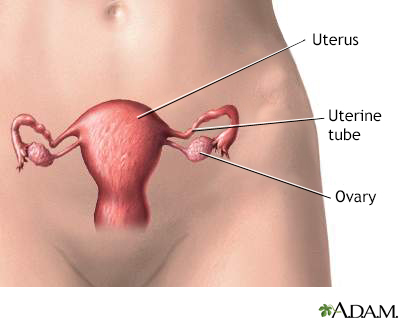Aging changes in hormone production
The endocrine system is made up of organs and tissues that produce hormones. Hormones are natural chemicals produced in one location, released into the bloodstream, and then used by other target organs and systems.
Hormones control the target organs. Some organ systems have their own internal control systems along with, or instead of, hormones.
As we age, changes naturally occur in the way body systems are controlled. Some target tissues become less sensitive to their controlling hormone. The amount of hormones produced may also change.
Blood levels of some hormones increase, some decrease, and some are unchanged. Hormones are also broken down (metabolized) more slowly.
Many of the organs that produce hormones are controlled by other hormones. Aging also changes this process. For example, an endocrine tissue may produce less of its hormone than it did at a younger age, or it may produce the same amount at a slower rate.
AGING CHANGES
The hypothalamus is located in the brain. It produces hormones that control the other structures in the endocrine system, including the pituitary gland. The amount of these regulating hormones stays about the same, but the response by the endocrine organs can change as we age.
The pituitary gland is located just below (anterior pituitary) or in (posterior pituitary) the brain. This gland reaches its maximum size in middle age and then gradually becomes smaller. It has two parts:
- The back (posterior) part stores hormones produced in the hypothalamus.
- The front (anterior) part produces hormones that affect growth, the thyroid gland (thyroid stimulating hormone or TSH), adrenal cortex, ovaries, testes, and breasts.
The thyroid gland is located in the neck. It produces hormones that help control metabolism. With aging, the thyroid may become lumpy (nodular). Metabolism slows over time, beginning at around age 20. Because thyroid hormones are produced and broken down (metabolized) at the same rate, thyroid function tests are most often still normal. In some people, thyroid hormone levels may rise, leading to an increased risk of death from cardiovascular disease.
The parathyroid glands are four tiny glands located around the thyroid. Parathyroid hormone affects calcium and phosphate levels, which affect bone strength. Parathyroid hormone levels rise with age, which may contribute to osteoporosis.
Insulin is produced by the pancreas. It helps sugar (glucose) go from the blood to the inside of cells, where it can be used for energy.
The average fasting glucose level rises 6 to 14 milligrams per deciliter (mg/dL) every 10 years after age 50 as the cells become less sensitive to the effects of insulin. Once the level reaches 126 mg/dL or higher, the person is considered to have diabetes mellitus.
The adrenal glands are located just above the kidneys. The adrenal cortex, the surface layer, produces the hormones aldosterone, cortisol, and dehydroepiandrosterone (DHEA).
- Aldosterone regulates fluid and electrolyte balance.
- Cortisol is the "stress response" hormone. It affects the breakdown of glucose, protein, and fat, and it has anti-inflammatory and anti-allergy effects.
Aldosterone release decreases with age. This decrease can contribute to lightheadedness and a drop in blood pressure with sudden position changes (orthostatic hypotension). Cortisol release also decreases with aging, but the blood level of this hormone stays about the same. DHEA levels also drop. The effects of this drop on the body are not clear.
The ovaries and testes have two functions. They produce the reproductive cells (ova and sperm). They also produce the sex hormones that control secondary sex characteristics, such as breasts and facial hair.
- With aging, men often have a lower level of testosterone.
- Women have lower levels of estradiol and other estrogen hormones after menopause.
EFFECT OF CHANGES
Overall, some hormones decrease, some do not change, and some increase with age. Hormones that usually decrease include:
- Aldosterone
- Calcitonin
- Growth hormone
- Renin
In women, estrogen and prolactin levels decrease significantly.
Hormones that most often remain unchanged or only slightly decrease include:
Testosterone levels usually decrease gradually as men age.
Hormones that may increase include:
- Follicle-stimulating hormone (FSH)
- Luteinizing hormone (LH)
- Norepinephrine
- Parathyroid hormone
RELATED TOPICS
- Aging changes in immunity
- Aging changes in organs, tissues, and cells
- Aging changes in the male reproductive system
- Menopause

Menopause is the transition in a woman's life when the ovaries stop releasing eggs, menstrual activity decreases and eventually ceases, and the body decreases the production of the female hormones estrogen and progesterone.

The female reproductive organs are located in the lower abdomen.
References
Brinton RD. Neuroendocrinology of aging. In: Fillit HM, Rockwood K, Young J, eds. Brocklehurst's Textbook of Geriatric Medicine and Gerontology. 8th ed. Philadelphia, PA: Elsevier, 2017:chap 13.
Lobo RA, Suh Y. Menopause and aging. In: Strauss JF III, Barbieri RL, Dokras A, Williams CJ, Williams Z, eds. Yen & Jaffe's Reproductive Endocrinology. 9th ed. Philadelphia, PA: Elsevier; 2024:chap 14.
Walston JD. Common clinical sequelae of aging. In: Goldman L, Cooney KA, eds. Goldman-Cecil Medicine. 27th ed. Philadelphia, PA: Elsevier; 2024:chap 24.
Version Info
Last reviewed on: 7/15/2024
Reviewed by: Frank D. Brodkey, MD, FCCM, Associate Professor, Section of Pulmonary and Critical Care Medicine, University of Wisconsin School of Medicine and Public Health, Madison, WI. Also reviewed by David C. Dugdale, MD, Medical Director, Brenda Conaway, Editorial Director, and the A.D.A.M. Editorial team.
